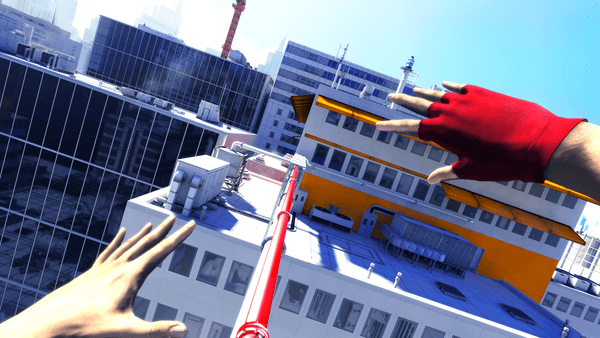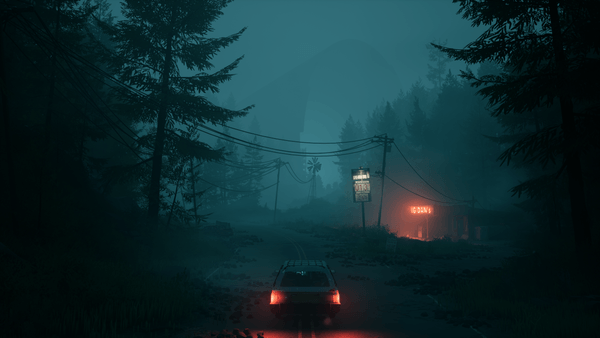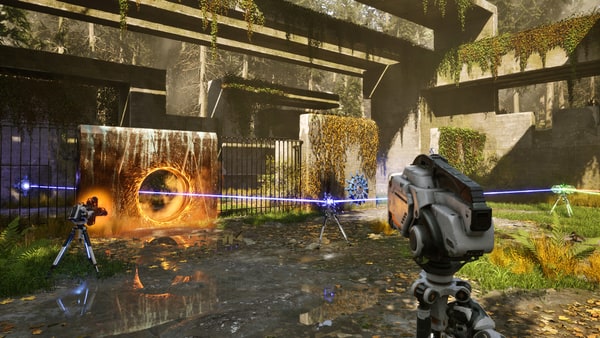The Deprofessionalization of the Games Industry
While layoffs are rampant under big-budget behemoths, I hope the future might favor teams daring to dream mid-sized again.
I found my calling at the tender age of 10 years old when I stumbled upon the then newly released FPS Creator in 2005. “Design your own first person shooter games - No coding required!” read the marketing back then. And from the moment I saw my first little level, made in about a day, render in real-time, I knew this would be something I wanted to do long-term.
I mean, for crying out loud, I have a Bachelor’s in Digital Games focused on Game Design and I’m wrapping up a Master’s in the same. I’m really invested in the industry and I love to see it thrive and innovate.

Mirror’s Edge (2008) by DICE
AAA Is In a Rut
Back in 2005, I couldn’t have predicted how massive the games industry would become. It’s by far the biggest entertainment sector. Of course, alongside new models of monetization, there was lots of innovation and transformation in the space, but also lots of consolidation. Acquiring Zenimax and ABK, Microsoft absorbed over 60 game studios and powerful multimedia publishing arms. Importantly, they also bought their intellectual properties.
There’s no such thing as infinite growth though. Matthew Ball’s The State of Video Gaming in 2025 paints a picture of the industry reaching some kind of ceiling. And until more innovation brings in more monetization, we’re beginning to see how that ceiling looks like. The massive layoffs across the industry, to me, show that art is one of the first things on the chopping block when the going gets tough. Still, despite it all, we had a couple years of incredible releases and disappointments - the industry is very much alive.
While that’s going on, we see concrete examples pointing out a still rather small, but distinct shift of focus towards indie games. A deprofessionalization one may call it. And it doesn’t appear to be looking good for the big and established publishers and everybody working there.
While I too find the mass layoffs devastating to follow - the livelihoods of so many in the industry at risk - I find that the current panic is bound to become an overcorrection following years of unbelievable growth and naively expecting it to keep going forever. Honestly, call me naive, but it seems fundamentally misaligned for publicly traded companies to be in the business of art. But aside from an overcorrection, I also find this to be a chance to see what’s up ahead and a chance to bring a broad new wave of creativity in.
As in many other spheres, the “middle of the market […] disintegrating” is definitely something I’ve observed for the last decades in gaming. It appears to have been the reason Sony closed Japan Studio. But contrary to that, I think it’s worth asking whether we really need to keep betting the house on massive, multi-hundred-million-dollar projects? Of course, supporting a workforce hundreds (or thousands) strong demands scale, and publishers looking for further growth won’t be lining up for your average artsy sidescroller. But that is not the situation big-name developers find themselves in. They’re increasingly swinging for the fences each project. Concord actually was a great example of putting all eggs in one basket to a devastating flop.
Put bluntly, what I want is the unlikely thing of A and AA games to more broadly make a return.

Pacific Drive (2024) by Ironwood Studios
Thanks to democratized dev tools, we’ve seen the value delivered by talented solo developers and small teams, with projects inching closer to filling the bottom part of that void. But they naturally have a hard time reaching the same level of ambition a mid-sized team with a decent budget could afford - quality mid-sized projects that would fit into that middle segment. Teams of less than 100 people with not out-of-this-world budgets, Sandfall Interactive’s Clair Obscur: Expedition 33 being a recent example.
In the last decade I feel a divide in creativity between big budget titles and indies has formed (while the definition of “big budget” definitely also has changed). We’re seeing remakes and remasters one after the other, banking on nostalgia. We’re seeing one Call of Duty and Assassin’s Creed after the other, banking on an established name. That’s not to discredit the skill or creativity of those teams - the production quality is clearly extremely high - but the fatigue with the big franchises is growing to be real, and it’ll be hard to shake off. At the same time, indies can afford to be weird and experimental, and they’re a lot less aggressive about the monetization. But most importantly, they’ve been shaking off their “small project” stigmata in the general zeitgeist.
In short, I think a renewed focus on creativity and smaller projects could spark new franchises to milk for the decade(s) to come. It’s all a cycle anyway. Right now it’s sloping into a rut, but we need to think of the fuel that will propel the rise later. And I have a feeling that it won’t be yet another Call of Duty.
I want to be excited for the next experimental horror series like Silent Hill back in the day, a return to the gimmicky shooter à la Half-Life, tactical espionage and spy games, 3D platformers, immersive sims and life sims, fresh VR concepts, and completely new experiences. But at this rate, they’re not going to come from the big names who in time will be scrambling to buy the interesting developers and franchises and molding them into safe, profitable, gray goo.
So actually I would prefer a little bit of deprofessionalization of the games industry.
Give me that weird movie tie-in game that introduces new rendering tech. A horror experience with a similar level of love and care as Alien: Isolation. A wonderfully cute soft-body physics platformer like LocoRoco. A brand-centric game with an integration that makes sense, like Need for Speed: Porsche Unleashed. That spiritual successor to No One Lives Forever or Splinter Cell. There’s surely more to explore from where The Last Guardian, Alien Swarm or Beat Saber have left off. Or combine turn-based combat with cards like Metal Gear Acid.

The Talos Principle 2 (2023) by Croteam
Once in a while there’s something pretty out there coming along, like High on Life. While not praised to high heaven (and I’m also not a fan), it’s at least trying to be very different. And, with a bit of help, it seems to have gotten into quite a few players’ hands.
My thoughts go out to everyone who lost their dream job in this chaos. Even if the longest running studios that suffered closures have changed a lot since their glory days, it still just sucks so bad.